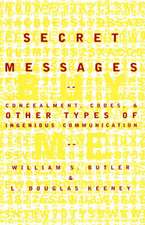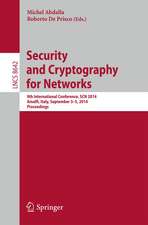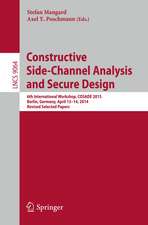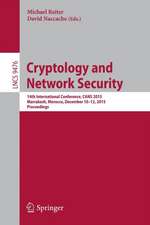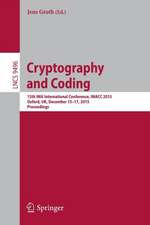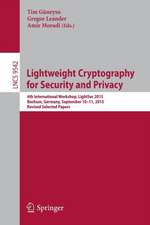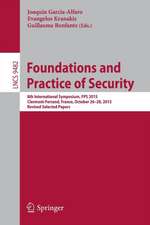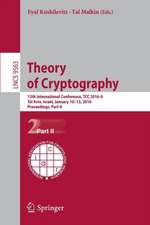Journal of Cyber Security and Mobility (5-4)
Editat de Ashutosh Dutta, Wojciech Mazurczyk, Neeli R. Prasaden Limba Engleză Paperback – 15 sep 2016
The modulation aspects presented in the book use modern concepts of stochastic processes, such as autocorrelation and power spectrum density, which are novel for undergraduate texts or professional books, and provides a general approach for the theory, with real life results, applied to professional design.
This text is suitable for the undergraduate as well as the initial graduate levels of Electrical Engineering courses, and is useful for the professional who wants to review or get acquainted with the a modern exposition of the modulation theory.
The books covers signal representations for most known waveforms, Fourier analysis, and presents an introduction to Fourier transform and signal spectrum, including the concepts of convolution, autocorrelation and power spectral density, for deterministic signals. It introduces the concepts of probability, random variables and stochastic processes, including autocorrelation, cross-correlation, power spectral and cross-spectral densities, for random signals, and their applications to the analysis of linear systems. This chapter also includes the response of specific non-linear systems, such as power amplifiers.
The book presents amplitude modulation with random signals, including analog and digital signals, and discusses performance evaluation methods, presents quadrature amplitude modulation using random signals. Several modulation schemes are discussed, including SSB, QAM, ISB, C-QUAM, QPSK and MSK. Their autocorrelation and power spectrum densities are computed. A thorough discussion on angle modulation with random modulating signals, along with frequency and phase modulation, and orthogonal frequency division multiplexing is provided. Their power spectrum densities are computed using the Wiener-Khintchin theorem.
Preț: 262.97 lei
Nou
Puncte Express: 394
Preț estimativ în valută:
50.32€ • 52.68$ • 41.64£
50.32€ • 52.68$ • 41.64£
Carte tipărită la comandă
Livrare economică 07-21 aprilie
Preluare comenzi: 021 569.72.76
Specificații
ISBN-13: 9788793609365
ISBN-10: 8793609361
Pagini: 62
Dimensiuni: 156 x 234 x 4 mm
Greutate: 0.11 kg
Editura: River Publishers
ISBN-10: 8793609361
Pagini: 62
Dimensiuni: 156 x 234 x 4 mm
Greutate: 0.11 kg
Editura: River Publishers
Descriere
In recent years, considerable effort has been devoted, both in industry and academia, towards the design, performance analysis and evaluation of modulation schemes to be used in wireless and optical networks. Modulation Theory is intended to serve as a complementary textbook for courses dealing with Modulation Theory or Communication Systems, but also as a professional book, for engineers.




